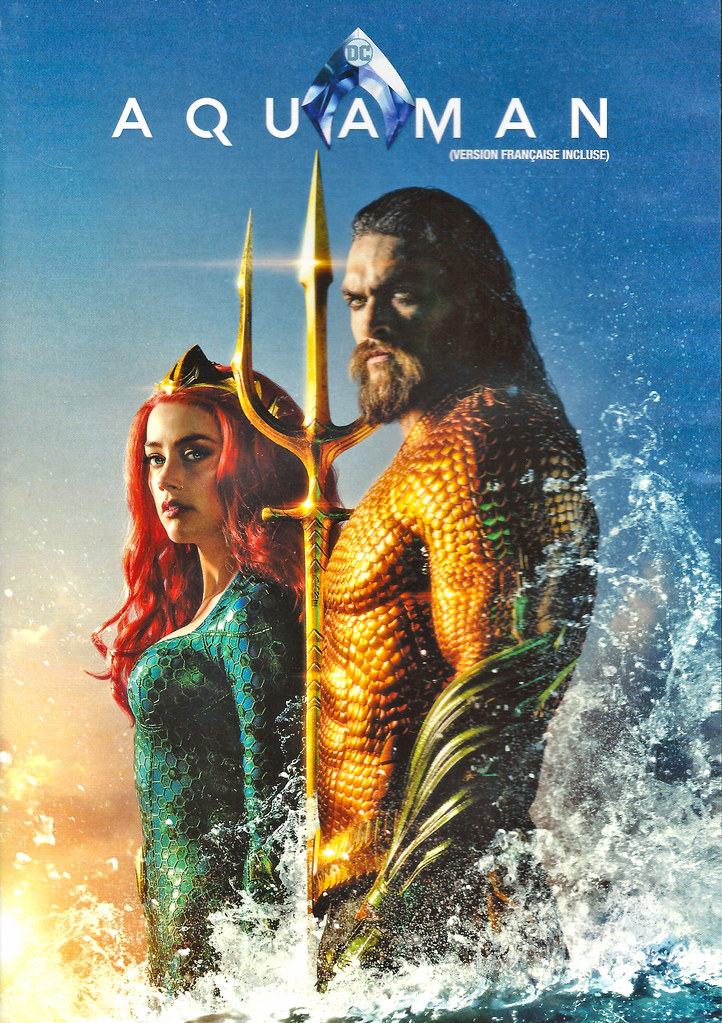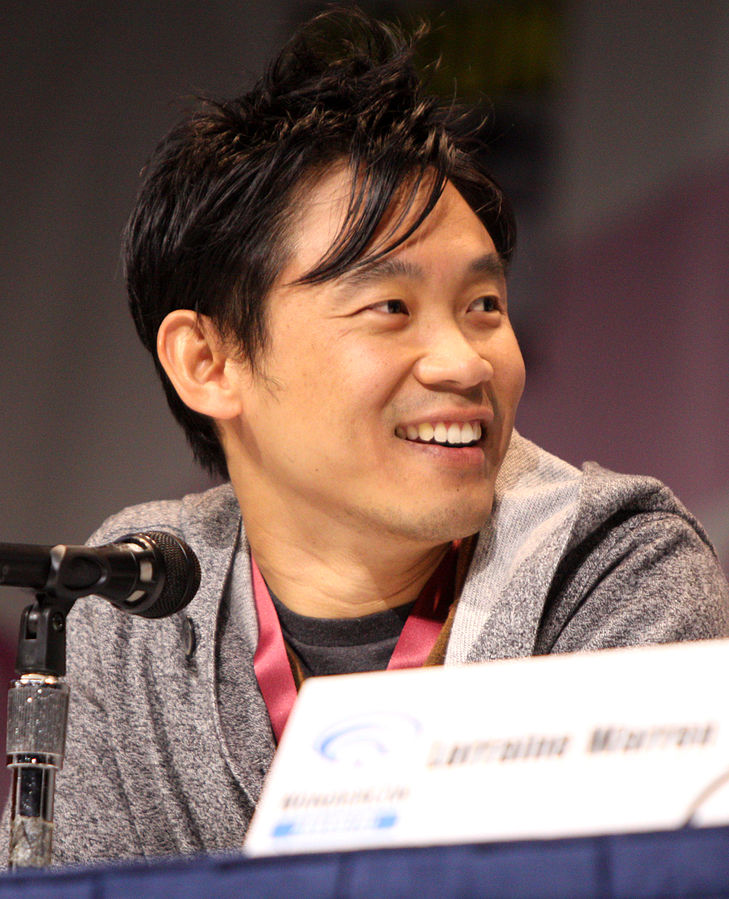Title of the work
Studio / Production Company
Country of the First Edition
Country/countries of popularity
Original Language
First Edition Date
First Edition Details
Aquaman. Directed by James Wan. Screenplay by Will Beall. USA: Warner Bros. Pictures, 2018, 143 min.
Running time
Date of the First DVD or VHS
Awards
2019 – Chinese American Film Festival – Most Popular U.S. Film in China (November 3, 2019).
Genre
Action and adventure fiction
Fantasy films
Target Audience
Crossover
Cover

Poster (French version), uploaded by School Library. Retrieved from flickr.com, licensed underCC BY-NC-ND 2.0 (accessed: January 7, 2022).
Author of the Entry:
Agnieszka Maciejewska, University of Warsaw, agnieszka.maciejewska@student.uw.edu.pl
Peer-reviewer of the Entry:
Elżbieta Olechowska, University of Warsaw, elzbieta.olechowska@gmail.com
Susan Deacy, University of Roehampton, s.deacy@roehampton.ac.uk

Will Beall (Scriptwriter)
Will Beall is a director and also a detective in the Los Angeles Police Department. Before his career, as a director developed he had been a writer. In 2006 he published his first novel LA REX which became a base for a winning script for the Hollywood annual survey for the best scripts. In the following years, Beall wrote scripts for the TV series Castle (2009) and the film Gangster Squad (2013). The most highly regarded script he has ever written is the one for Aquaman produced in 2018. His latest production where he was not only a producer but also a director is the TV series Deputy (January 2020).
Sources:
facebook.com (accessed: January 29, 2020);
imdb.com (accessed: January 29, 2020);
vjbooks.com (accessed: January 29, 2020);
en.wikipedia.org (accessed: January 29, 2020).
Bio prepared by Agnieszka Maciejewska, University of Warsaw, agnieszka.maciejewska@student.uw.edu.pl

James Wan by Gage Skidmore. Retrieved from Wikimedia Commons, licensed underCC BY-SA 3.0 (accessed: January 7, 2022).
James Wan
, b. 1977
(Director)
A film director, screenwriter, producer and comic book writer. While he was a child, he dreamed of becoming a film director. He graduated from The Royal Melbourne Institute of Technology. During his studies, he produced his first films – music videos and short films. His early film Stygian won “The Best Guerrilla Film" at the Melbourne Underground Film Festival (MUFF) in 2000. Soon after this success, he created his first short DVD with his friend Leigh Whannell. Thanks to that short video, he gained popularity in the film industry. He participated in many projects, such as Saw I (2004), Saw II (2005), Saw III (2006), Dead Silence (2007), Insidious (2011), Furious 7 (2015), and Aquaman (2018).
Sources:
imdb.com (accessed: January 29, 2020);
empireonline.com (accessed: January 29, 2020);
tribute.ca (accessed: January 29, 2020);
peoplepill.com (accessed: January 29, 2020).
Bio prepared by Agnieszka Maciejewska, University of Warsaw, agnieszka.maciejewska@student.uw.edu.pl
Casting
Jason Momoa as Arthur Curry / Aquaman,
Amber Heard as Mera,
Willem Dafoe as Nuidis Vulko,
Patrick Wilson as Orm Marius / Ocean Master,
Dolph Lundgren as King Nereus,
Yahya Abdul-Mateen II as David Kane / Black Manta,
Ludi Lin as Captain Murk,
Temuera Morrison as Tom Curry,
Nicole Kidman as Atlanna.
Sequels, Prequels and Spin-offs
Prequels:
Aquaman shows up in an earlier movie about DC Universum: League of Justice (2017).
He is shown as an insensitive person with no empathy for people who are hurt. He evolves in time, and his character development is more detailed in Aquaman (2018).
Spin-off:
Aquaman’ s spin-off The Trench is still in development (variety.com, accessed: January 29, 2020).
Sequel:
The launch of the second part of the movie is planned for 16th of December 2022 (www.imdb.com, accessed: January 29, 2020).
Summary
The plot concentrates on the life of Arthur Curry – the Aquaman. In the opening scenes, we find out more about him and his life. He is half-human, half Atlantean. His mother Atlanna was the Queen of the underwater Atlantis. His father was just an average human working as a lighthouse keeper. Sadly they didn’t have a chance to enjoy peaceful family life together. When Arthur was little, his mother was punished for a betrayal by the army of the King of Atlantis and sentenced to death but she managed to escape.
As a young boy, Arthur discovered his unique abilities, such as communicating with water creatures and breathing underwater. He mastered his skills under the protection of Nuidis Vulko – a loyal servant of the queen. When Arthur grew up, he became Aquaman – a hero who has power over the element of water and becomes the savior of humankind and his motherland.
Meanwhile, his half-brother Orm Marius, ruler of Atlantis, wants to join forces with the seven sea tribes and become the Ruler of the Ocean. He declares war with the land realm under the pretext that people have been contaminating the seas for a long time. Aquaman is asked for help by Mera, Orm’s fiancée, to defeat him. Arthur and Mera start a quest to find the Trident of King Atlan, the first King of Atlantis, which is required to overcome Orm. After many adventures, Arthur obtains the Trident and rushes towards the army of the seven kingdoms to stop the war. He defeats his brother and becomes the ruler of Atlantis.
Analysis
This film is not only entertainment for the modern spectator, but it also refers to many mythological threads that are amusing for the viewers.
The primary mythological reference is the kingdom of Atlantis described by Plato (mostly in the dialogues Timaeus and Critias). Plato describes the city as an astonishing creation consisting of nine circles, indestructible for people and ruled by Atlas. Atlantis was destroyed by enormous earthquakes and by floods. The director refers to the same cause. When Atlanna tells the story of Atlantis to little Arthur, she mentions the sea being jealous of the power which causes an earthquake strong enough to destroy the city.
There is a discrepancy between the film and ancient sources when it comes to the number of kingdoms in Atlantis. Plato wrote about nine circles; in the film, there are only seven. In the opening scenes, we see how the city was founded. Initially, as a city on the land, it was still a breathtaking place. Buildings are similar to those we know from Antiquity (many columns, friezes, and Greek sculptures). The city is also divided into circles. This changes when the city goes underwater. This is a moment of transformation. Ancient buildings from the opening scenes are later shown as ruins located in the darkest and deepest parts of the sea. Those ruins are the perfect spot for our heroes – a hideout where they can peacefully talk. Atlantis is again shown as a splendid underwater city where technology and nature coexist peacefully and complement one another. Director referred to the common representation of Atlantis as a highly developed city with sophisticated technology. It is a common motif in pop culture, we can find it e.g. in the Land of the Lost produced by Disney. The presence of darkness and contrasting shining light colors brings to mind a modern city at night with thousands of billboards and lights. There is a border guard that prevents any creature from passing through without permission. The weapons used by the Atlantis army are highly developed and look more modern and advanced than those used by humans. Atlanteans also use holograms created with water and other high technologies like tracking devices etc.
The film also uses the motif of King Atlas and the Trident of Poseidon; this is another reference to Plato, who identified King Atlas as one of the first rulers of Atlantis. The origins of the city’s, and its inhabitants’, names are connected to the King. He is shown as a powerful ruler who drowns with his city protecting his trident (made of “Poseidon’s steel” and containing the full power of Atlantis). In Antiquity bronze was commonly used while steel which was unknown. The film tries to emphasize the high technological level of this realm by upgrading certain elements like the aforementioned trident made of steel. The king’s name is changed to Atlan, and his people are named Atlanteans, so the whole nomenclature refers to Atlantis.
The legend shown in the film stipulates that only a legitimate ruler may receive the Trident from the hands of the deceased Atlan. The Trident is also guarded by a monster, but Aquaman gets it without any problems. The motif of the Trident is related to Poseidon’s attribute, the King of Seas, shown in film and the ancient Greek sources, with a Trident which authenticates his divinity, force, and power. Getting the Trident is the only way to gain absolute control over the seas and the oceans, like Poseidon, who ruled with a trident in his hand.
There is a significant motif about the main hero's connection to water. Water directs his life and becomes a guide which allows him to find more indications about the Trident’s whereabouts (even in the desert). Water is a specific form of guide and an integral part of his life. This motive helps the spectator to remember that the element connected to people living in Atlantis is water.
There are also historical references in the film: when Mera and Aquaman try to solve the riddle to discover the Trident’s location they go to Sicily. Aquaman has a mission there. He needs to find the “True King”. When they stand next to the ancient sculptures of important historical and mythological figures, Arthur explains the role of each one of them. They discover that Romulus, the founder of Rome, is the True King. This scene gives the spectators a chance to find out more not only about themes related to Atlantis but also about critical historical and mythological figures which had a considerable impact on the ancient world.
Further Reading
Aquaman: War for the Throne (accessed: January 29.01.2020).
Marv Wolfman, George Perez, Karl Kesel, Tom Ziuko, History of the DC Universe, DC Comics, 2002, 105 pp.
Len Wein, Kelley Jones, DC Universe, 2019, 384 pp.


